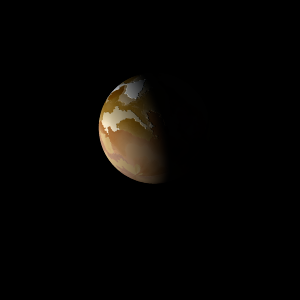|
|
Space Astro
|
Info for exoplanet "Yunq"
| Scientific (actual) data |
|---|
| Name | Kepler-1003 b |
| Planet status | Confirmed |
| Radius | 0.159 |
| Orbital period | 3.55486 |
| Discovered | 2016 |
| Updated | 2021-02-05 |
| Tconj | 2454960 |
| Publication | Announced on a website |
| Detection type | Primary Transit |
| Alternate names | 2MASS J19280490+4452343 b, K01893.01, KIC 8689793 b, KOI-1893 b, KOI-1893.01, WISE J192804.90+445234.4 b |
| Star name | Kepler-1003 |
| Right ascension | 292.02° |
| Declination | 44.88° |
| Mag j | 12.95 |
| Mag h | 12.637 |
| Mag k | 12.623 |
| Star distance | 873 |
| Star metallicity | 0.01 |
| Star mass | 1.11 |
| Star radius | 1.17 |
| Star age | 3.16 |
| Star temperature | 6109 |
| Star alternate names | 2MASS J19280490+4452343, KIC 8689793, KOI-1893, WISE J192804.90+445234.4 |
| Wikipedia article | Kepler-1003 b |
Back
| |
| Fictional info (?) |
|---|
| Suggested name | Yunq |
| Planet type | Cold planet |
|
This place is dangerous because of the unpredictable ultra advanced insects known as "Neihang". They spend their life at the sea by finding nourishment in the Yyude plant. Most Neihang are related to the Ezheilo Zh, have 7 eyes and vary in size from 50 to 90 mm. Neihang are able to reproduce at temperatures from -100 to -60°C and even high atmospheric pressure. |
| Estimated population | 50 |
| Atmosphere | Methane | 46% |
| Oxygen | 30% |
| Water | 23% |
| Carbon dioxide | 0.85% |
| Atmospheric pressure | 1.7 bar |
 |
| No known satellites |
| Google search for Yunq |
|
Website by Joachim Michaelis
|
|
|
|